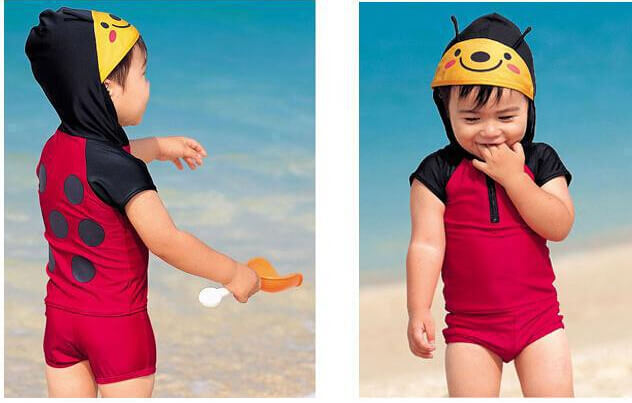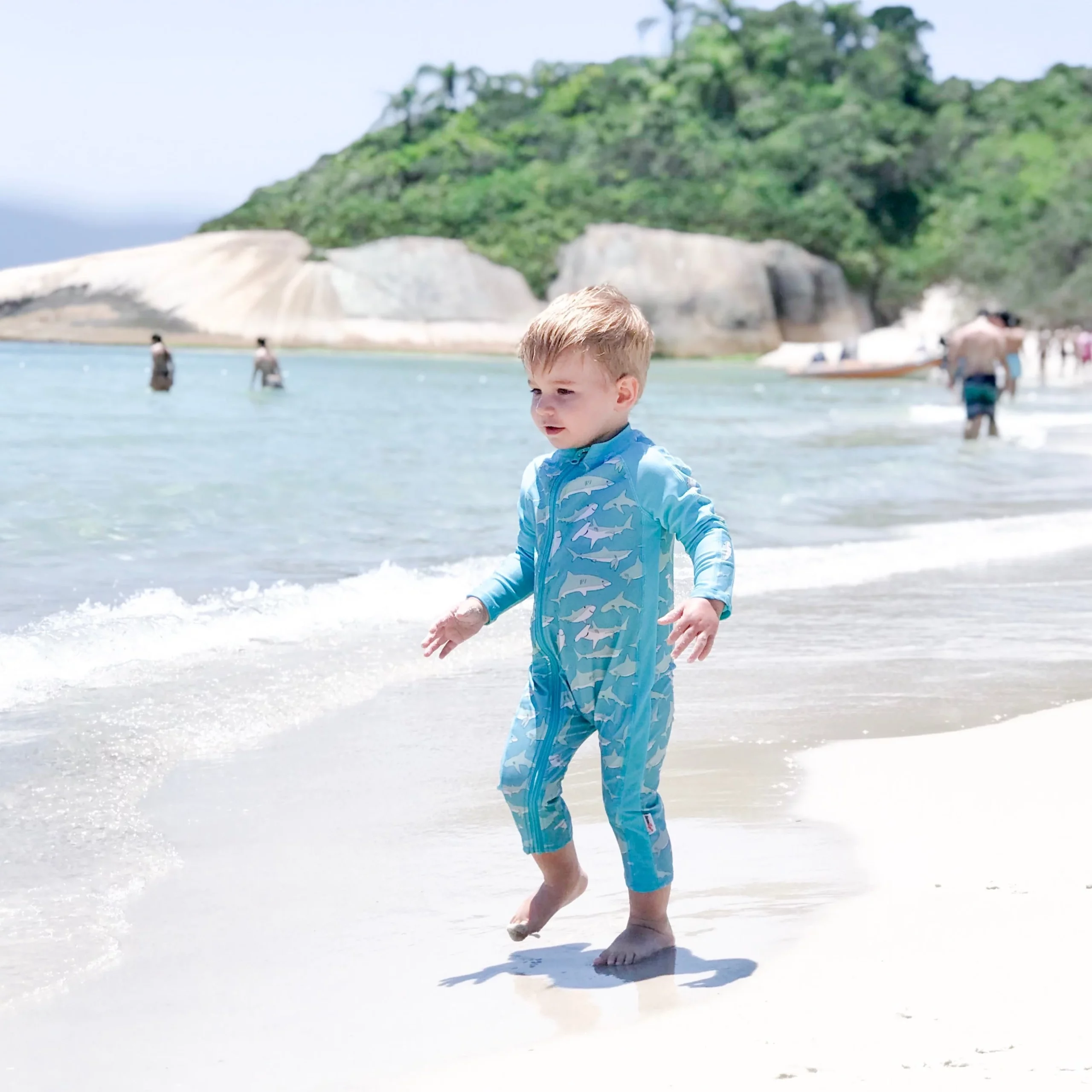Is it sun safe? Does it have the SPF50+ protection? Will it keep this delicate, precious and pristine young skin protected in the harsh Aussie sun and during long days at the beach?
Yep, we hear you! It’s the number one question we get asked by parents like you, and the younger, fairer and more delicate the skin, the more sun protection and sun safety in general is a major cause of anxiety.
I remember the days when Lila was so itty bitty and small, being absolutely desperate to experience our first family day out at the beach but once I got down there barely being able to enjoy myself! I was constantly applying more sun screen, wondering if she was adequately shaded (or too hot!) in the sun-tent, checking her skin wasn’t going pink and googling her swimsuit over and over to just triple check I definitely bought one that was UPF50+ protective. Any new parents amongst you can probably relate.
Luckily these days, I’ve got my sun protection game a bit more together. And having designed a kids swim collection, in consultation with many, many parents like you (market research is my jam), I’m here to share a few little hacks that can have you rest a bit easier about the sun, and relax into family days at the beach.
Oh, and don’t worry, I’m not going to just tell you to Slip, Slap and Slop (although that old chesnut really still holds a lot of sense!)
1. Make sure the swimwear you choose is durable and has a UPF50+ sun protective treatment
It’s easy to assume that anywhere that’s covered up is sun protected, and I honestly wish I could tell you that was the case, life would be so much simpler! Fabric that’s stretched out of shape, split or strained can let harmful rays through the gauze of the fibres.
But the gold standard is to choose swimwear independently certified as having a UPF50+ rating. UPF 50 means that if 50 units of UV fall on the fabric, only 1 unit will pass through because the fabric blocks or absorbs the rays. If they have a lesser rating, then more units will pass through… so you can see why it’s important to choose the highest rating you can! So much so, that it was something I could certainly never skimp on when creating our line. I wanted my kiddo, and yours, to be fully protected in their Little Fishy Swim. We have had our fabric independently tested to ensure this always holds true.
2. Look after your kids swiwmear to ensure they retain their sun-stopping power
Any swimsuit should be treated gently to preserve their UPF UV protective rating. After a day at the beach, immediately rinse your suit in running water. This removes things like sand, salt, and chlorine, which not only breaks down the fabric (see above for why this matters sun-wise!), but can break down the treatment used to make the swimwear sun-protective.
3. Choose a high factor, preferably reef safe, sun screen – and choose one especially for kids: for babies if your little one is under 6 months
OK I know you know about slip, slap, slop, but we couldn’t in good conscience write a blog about sun-protection and not write about sun lotion! It’s worth re-iterating a few ‘ground rules’ for the little ones though. The younger your babe, the more sensitive their skin, and if they’re under 6 months many sun screens for your bathroom cabinet might be an irritant to their young skin. It’s so important to:
– Choose a sunscreen formulated for kids (or babies, if relevant) with at least SPF50
– Re-apply at least every two hours
– Re-apply after they get in the water
– Re-apply if they get vigorously towelled down (it can rub off, yep, really)
– For extra eco-friendly creds, look for sun screens that are certified ‘reef-safe’: you’d hate for the chemicals you use to protect one water baby to do damage to another (more on that here.)
4. Cover ’em up in long-sleeve swimwear styles!
Yep, another oldie but a goodie. If the sun is especially strong that day, choose a swimsuit with long sleeves, and add a hat with a wide brim that goes all the way around. Yes, those sleeveless numbers and boardies look so darn cute, but in the hot midday sun it’s always worth adding a rashie on top. It’s a no brainer for the boys, but even for girls in gorgeous swimsuits like our cross-back ruffle number, it’s worth finding a style with a matching rashie to pop on top (voila! It’s kind of like the surfsuit style now…). And yep, we got you covered there too…
Oh, and if you can, seek shade. Whether you bring a beach tent with you, or seek an area on the beach shaded by some rocks or other shade, it’s always worth having somewhere to shelter from the suns harsh rays, even if just for a little one.
Remember though, even in the shade you can still get burnt from the sun’s rays reflecting off sand and water.
5. Don’t be fooled by cloud cover, cool or windy days
Clouds and fog may prevent some of the rays of sunlight coming through, but they don’t stop the sun’s harmful UV rays from reaching you down on the beach, where they are reflected off the sand and water for a double pronged attack!
It’s always worth checking the UV index before heading out of the door (the Cancer Council has a great app!) and don’t skip on the sun lotion, even if it’s tempting to.
6. Don’t forget your journey to and from the beach…. even if you travelled by car!
I’ve totally been that Mama – packed up bottles of sun-lotions, but only applied it once we’re all set up on the sand. Young skin can burn in just a few minutes (sorry to be the bearer of bad news), so it’s worth lotioning up before you step outside.
Oh and just a quick heads up: the sun’s rays can burn through the car window or when the windows are down. Lotion up at home, and if you need to, apply a top up when you get there.
7. Remember to hydrate often!
Sun safety isn’t just about sun-burn. It’s easy to get distracted during a long day playing on the sand… I know my little one is way more interested in jumping in the waves than asking for her water bottle (although weirdly she does always seem to seek out the snacks!) Especially for young babies, on the extra hot days make sure to hydrate them often. If your young baby is breastfed and not taking water, ensure you’re drinking plenty too – and feed them little and often (even if it means relaxing any kind of feeding schedule you may have been on)
So there you have it: lather on the sun lotion, plenty of it, early and often. And don’t forget that what you cover the skin with is (almost!) as important as the cream you rub upon it. Choose quality, sun-protective swimwear and look after it well, and it will look after you in return!



